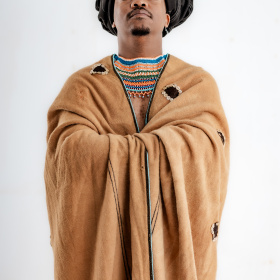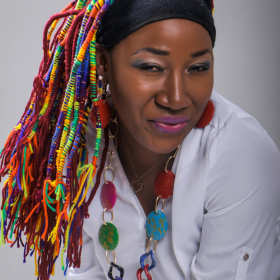World bids farewell to iconic Ethiopian pianist nun Emahoy Tsegué-Maryam Guèbrou
She was an enigma as much as she was an open book. For years, journalists tried to piece together the intriguing story of Emahoy Tsegué-Maryam Guèbrou, an Ethiopian nun who for 40 years was holed up in the ascetic confines of a monastery and whose piano playing prowess earned her the moniker ‘The Honky Tonk Nun’.
 The late Emahoy Tsegué-Maryam Guèbrou.
The late Emahoy Tsegué-Maryam Guèbrou.
Emahoy, who died at the age of 99 at a Jerusalem monastery on 27 March, lived a full life – one that was in service to humanity and to God. As an astoundingly talented pianist and a pioneering female musician, Emahoy’s contribution to Ethiopia’s musical tradition and equality movement will, no doubt, be celebrated for many years to come.
But perhaps as an indication of how contradictory her life was, few people would have had the chance to hear about Emahoy until 2006 when her works were revisited through Ethiopiques, a compilation series paying homage to Ethio-jazz greats such as Mulatu Astatke and Alemayehu Eshete.
This is when the global media sought to unravel the mystery behind this low-key icon. As it turned out, she eschewed scrutiny and only a few journalists like Kate Molleson, who made the documentary The Honky Tonk Nun about Emahoy, would be privileged to share her story with the world.
Born on 12 December 1923 in Addis Ababa, Ethiopia, to a well-to-do family, Emahoy enjoyed a privileged upbringing that saw her attend school in Switzerland. It is here that she first encountered Western classical music and took piano and violin lessons.
After school, Emahoy returned to Ethiopia where she enjoyed success as both a civil servant and a singer in the palace of Emperor Haile Selassie. In her article for the Guardian in 2017, Molleson writes: “Portraits from this period show a gorgeous young woman with a wry smile and a bold fashion sense. She went to high-society parties and sang for Haile Selassie. She had a car and raced a horse and trap around the city. She was a feminist: the first woman to work for the Ethiopian civil service, the first to sing in an Ethiopian Orthodox church, the first to work as a translator for the Orthodox Patriarch in Jerusalem.”
This idyllic existence was interrupted when Italy invaded Ethiopia in 1936 and Emahoy fled to Europe before finding her way to Cairo where she continued to pursue her passion under the tutelage of Polish violinist Alexander Kontorowicz.
She would later return to Addis Ababa where she played professionally until she earned a scholarship to study at the Royal Academy of Music. However, she was unable to take up the offer for reasons that are not clear. It is believed that this setback caused her to abandon her career and she become a nun at Gishen Mariam Monastery in northern Ethiopia for a decade.
It is during this period of seclusion that her musical abilities flourished again when she began infusing the techniques of her Western classical training with the religious music that she was now being exposed to.
In describing these compositions, Molleson writes: “There’s a stunning timelessness to her music: the ornaments are virtuosic and the chords lilt like a Chopin waltz – almost, but not quite. With Emahoy, nothing is regular. No fixed metre, no pulse that can be set in notation, no strict adherence to any one scale system. Her melodies flit between traditions; they float on their own axis. She found spiritual clarity and satisfaction through music, composing for violin, piano, and organ; she found inspiration from classical and liturgical canons along with popular Western styles like blues and ragtime.”
Emahoy released her first album in 1967, with her new collection Jerusalem set to come out on 14 April. Proceeds from her music are donated to charitable causes in Ethiopia.
She relocated to the Debre Genet monastery in Jerusalem in 1984 after her mother passed away, where she lived and played the piano until her death.
































Comments
Log in or register to post comments